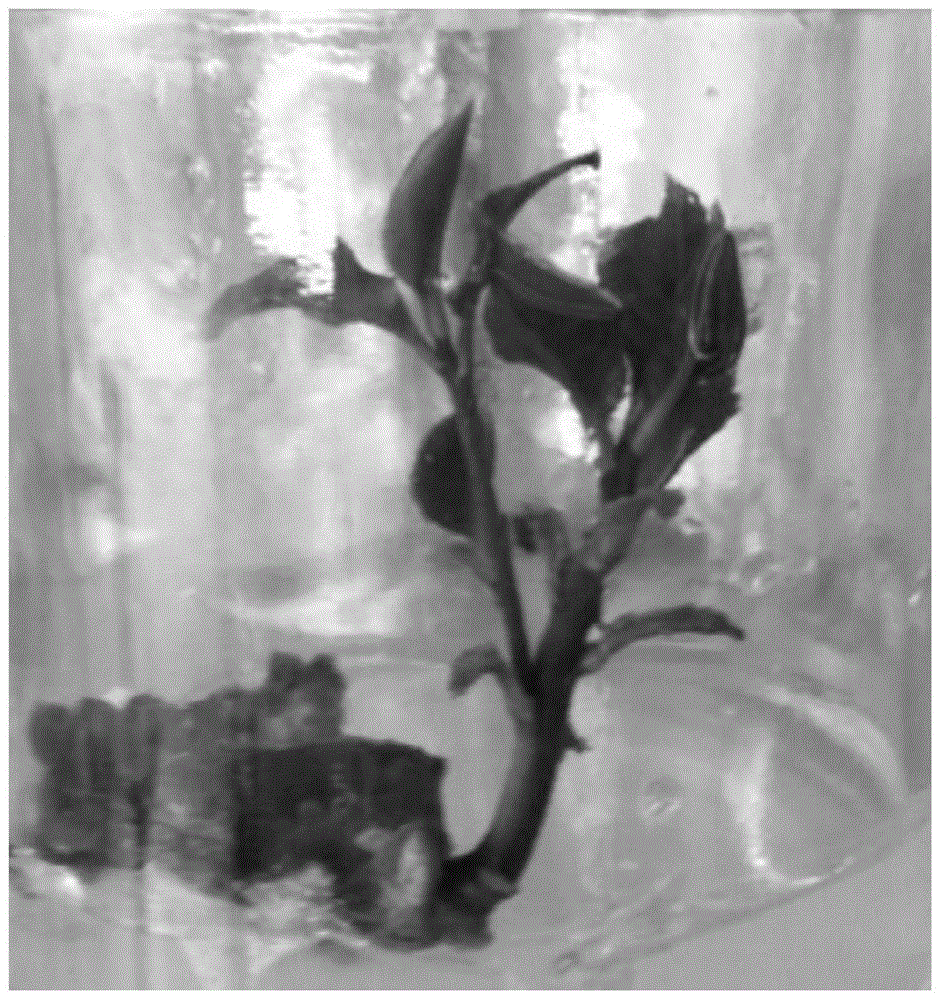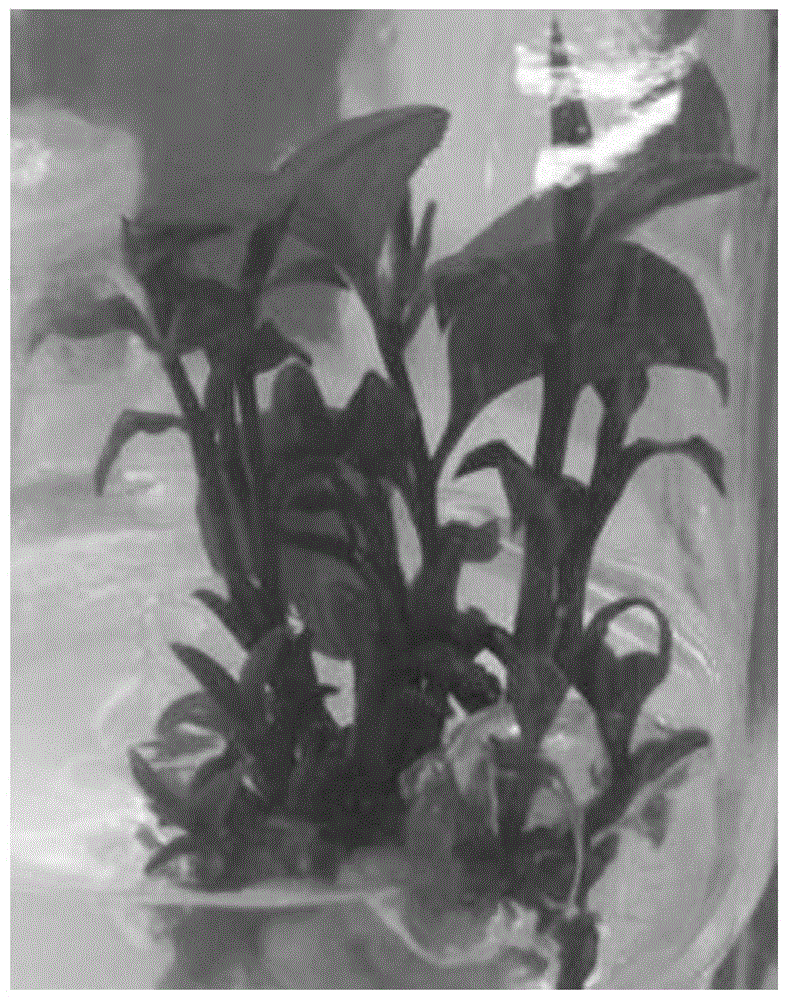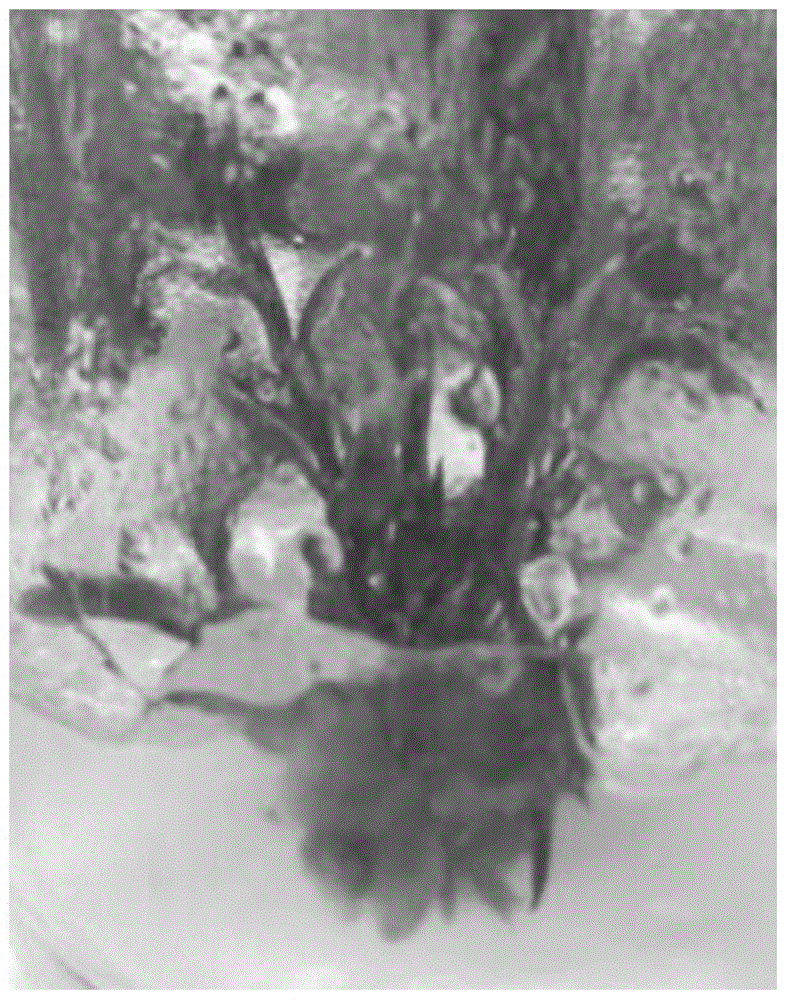A kind of Camellia japonica tissue culture propagation method
A Camellia japonica and tissue culture technology, applied in the field of plant propagation, can solve the problems of less research on the tissue culture of Camellia japonica, and achieve the effects of significant multiplication effect, overcoming a large number of materials, and high reproduction coefficient
- Summary
- Abstract
- Description
- Claims
- Application Information
AI Technical Summary
Problems solved by technology
Method used
Image
Examples
Embodiment 1
[0031] The basic medium used in this method includes MS and MW medium. MS basic medium formula: KNO 3 1900mg / L, NH 4 NO 3 1650mg / L, CaCl 2 2H 2 O 440mg / L, MgSO 4 ·7H 2 O 370mg / L, KH 2 PO 4 170mg / L, KI0.83mg / L, H 3 BO 3 6.2mg / L, MnSO 4 4H 2 O 22.3mg / L, ZnSO 4 ·7H 2 O 8.6mg / L, Na 2 Mo 4 ·H 2 O0.025mg / L, CuSO 4 ·5H 2 O 0.025mg / L, CoCl 2 ·6H 2 O 0.025mg / L, FeSO 4·7H 2 O 27.8mg / L, Na 2 .EDTA·7H 2 O 37.3mg / L, vitamin B1 1mg / L, vitamin B6 1mg / L, niacin 1mg / L, inositol 20mg / L, glycine 2mg / L, sucrose 2-4%, agar 6-7g / L. MW medium formula: except for the content of macroelements, other elements are the same as MS medium, and the content of macroelements is as follows: KNO 3 80mg / L, Ca(NO 3 ) 2 4H 2 O 150mg / L, MgSO 4 ·7H 2 O 350mg / L, NaH 2 PO 4 ·H 2 O 100mg / L, KCl 65mg / L, Na 2 SO 4 200mg / L.
[0032] The mature common camellia camellia seeds collected in October 2013 were used as explants, and the seed coat was peeled off. Before inoculation, the sur...
Embodiment 2
[0040] The basic medium MS and MW medium used in this method are the same as in Example 1.
[0041] The mature seeds of Fusui Dongdong Golden Camellia collected in October 2013 were used as explants, and the seed coat was peeled off. Before inoculation, the surface was sterilized with 75% alcohol for 40 seconds, and then sterilized with 8% NaClO solution for 25 minutes. , and finally rinse with sterile distilled water on the ultra-clean bench until it is clean.
[0042] Cut the sterilized seeds in the middle, and put the part with the embryo into the primary induction medium. The first-generation induction basic medium is based on MS medium, which also includes 6-BA 0.5mg / L, NAA 0.2mg / L, sucrose 30g / L and agar 6g / L, and the pH is adjusted to 5.8 to induce sterile bud.
[0043] The aseptic buds induced by the first generation were cut into terminal buds and stems with buds and inoculated on the subculture medium respectively. The subculture medium used MS as the basic medium...
Embodiment 3
[0049] The basic medium MS and MW medium used in this method are the same as in Example 1.
[0050] The hybrid golden camellia seeds collected in October 2013 were used as explants, and the seed coat was peeled off. Before inoculation, the surface was sterilized with alcohol with a volume concentration of 75% for 60 seconds, and then sterilized with a NaClO solution with a volume concentration of 5% for 30 minutes. Rinse with sterile distilled water until clean.
[0051] Cut the sterilized seeds in the middle, and put the part with the embryo into the primary induction medium. The first-generation induction basic medium is based on MS medium, which also includes 6-BA 0.2mg / L, NAA 0.5mg / L, sucrose 30g / L and agar 6g / L, and the pH is adjusted to 5.8 to induce sterile bud.
[0052] The aseptic buds induced by the first generation were cut into terminal buds and stems with buds and inoculated on the subculture medium respectively. The subculture medium used MS as the basic mediu...
PUM
 Login to View More
Login to View More Abstract
Description
Claims
Application Information
 Login to View More
Login to View More - R&D
- Intellectual Property
- Life Sciences
- Materials
- Tech Scout
- Unparalleled Data Quality
- Higher Quality Content
- 60% Fewer Hallucinations
Browse by: Latest US Patents, China's latest patents, Technical Efficacy Thesaurus, Application Domain, Technology Topic, Popular Technical Reports.
© 2025 PatSnap. All rights reserved.Legal|Privacy policy|Modern Slavery Act Transparency Statement|Sitemap|About US| Contact US: help@patsnap.com



